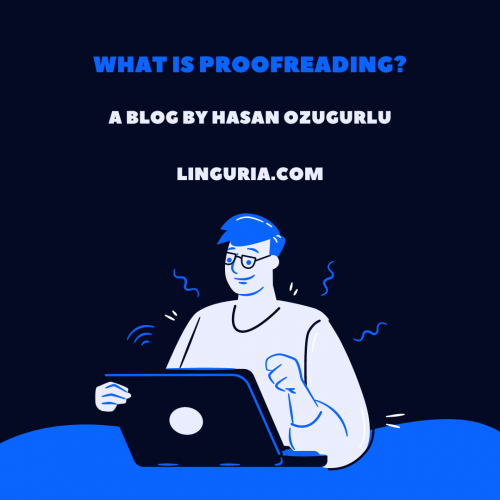Publishing process of any written work, be it a book, a newspaper or an article, consist of these general steps: First, the manuscript is prepared. Then it is submitted for editing where its contents are thoroughly reviewed and revised where necessary and lastly, the manuscript goes through one final check for any errors that may have remained. This final step where minor errors such as punctuation and spelling errors and formatting issues are ironed out.
Though it may often seem as trivial, proofreading is just as essential to the writing process as any other step. Sometimes even the smallest punctuation errors such as the misplacement or the lack of a comma can cause a sentence to be vague in meaning and formatting issues can render a document difficult to read, particularly to those who suffer from eye disorders.
It is important to know that proofreading and editing are not the same. Editing is a thorough review of the early draft of a written work where it goes through major changes to the content itself such as reordering, adding or removing entire sections to ensure that the text flows smoothly and the content is communicated to the reader as effectively as possible. Proofreading, on the other hand, is, again, a final check for minor errors such as punctuation and spelling errors and formatting issues.
Proofreading can be done by the writer themselves, someone else they trust or by a professional proofreader. It is usually recommended that writers do not proofread their own work as another person reading the manuscript for the first time would be able to spot mistakes more easily.
In this modern age of computers, proofreading is usually done through Microsoft Word, Google Docs or other word processors which feature a “track changes” option that automatically marks any change made to the text until the proofreader saves them. Specialized proofreading services with a higher degree of accuracy are such as Grammarly or Ginger also available.
When a business wishes to expand its operations to other countries than the one it is based in, it makes certain adjustments on its product or service according to the factors in the country it is expanding such as the country’s native language in order to make it as convenient as possible for the local consumer. This process is called localization.
The purpose of localization is basically to make a product sellable in a foreign market by changing whatever elements of the product necessary for something the local population would be familiar with. These elements include language first and foremost and generally also the slogans and the audio-visual elements such as the colors, the pictures or the artwork and songs. A localization project usually includes translation, graphic design and advertising, but depending on the project, there may also subtitle, voice acting and even singing involved. Every aspect of the target country is taken into account during localization; the language, the cultural norms, the regulations, units, date and address formats etc. all influence the final product. For instance, the user interface of a smartphone or a PC are on opposite sides such when the language is set to Arabic because Arabic is a language that is written from right to left and English is written from left to right. The expiry date of the same product is written on the package as Month/Day/Year in the US, whereas in Turkey, it would be written as Day-Month-Year. European cars (unless they are British cars) have gauges with different units when sold in the US because most of Europe uses the metric system, whereas the US uses the imperial system.
Localization is usually provided by language service providers (LSP) or companies that specialize on localization such as Lionbridge, TransPerfect or Welocalize. A company may also have its internal localization team. A localization team usually has at least a translator, a graphic designer and a marketing specialist onboard, though, again, this may change depending on the needs of the project.
Before computers were widespread, publishing was done manually. Large printing machines were required to copy the pages. The images and text had to be printed separately, then cut out, placed on a single sheet, taped in place and then copied and printed. Add to that the amount of different layouts and fonts that may be needed in a given document, such as a newspaper which has a different layout for almost every page and publishing ended up a very costly and time-consuming endeavor. Today, almost all of this process and much more can be done through just a computer and the right software.
Desktop publishing is the process of preparing a document for print or online viewing through the use of a computer and a desktop publishing software. It includes setting up page layouts, typesetting (choosing the fonts and the text layout) and, depending on the project, also graphic design. Desktop publishing is used in the creation of a wide range of materials. Examples include: Books and book covers, e-books, newspapers, email newsletters, web pages, blogs, business cards, logos, all types of packaging and even the preparation of billboards and highway signs are all considered desktop publishing.
The software used in desktop publishing may vary depending on the situation but mainly, dedicated desktop publishing software is used such as Adobe InDesign and Corel Draw. Other applications such as Adobe Photoshop or Illustrator may also be used if the project requires graphic design and even Word processors such as Microsoft Word and Google Docs may prove sufficient if it is a simple enough project.
Hasan Ozugurlu






